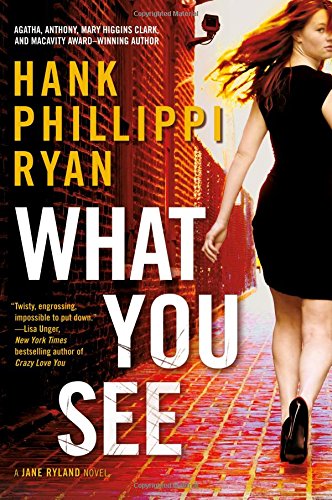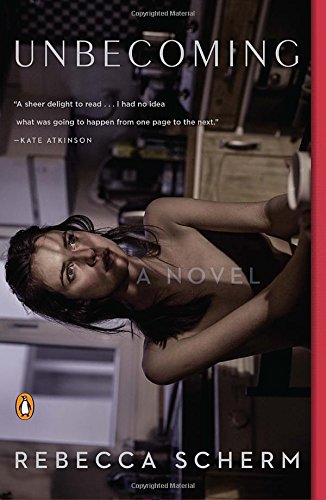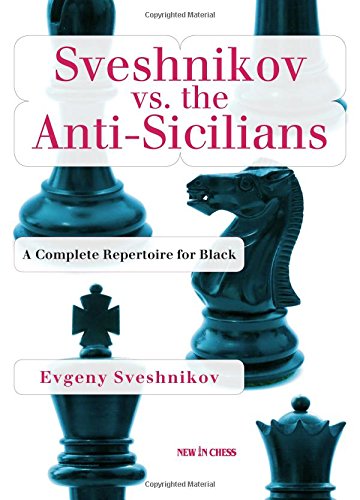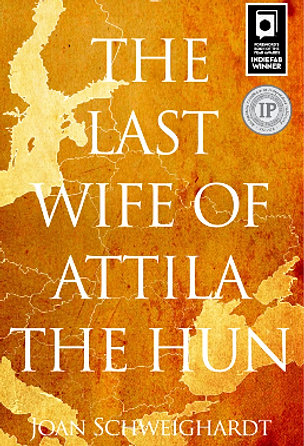 Kerdijk Nicholson’s poems are not difficult to read: they flow in straightforward rhythms, and take on familiar landscapes and territories, but the poems in Everyday Epic are much more complex then they seem at first glance. It is through the everyday moments of such universal elements as love, grief, work, that we find the epic, and in those old stories of conquest and domination, where we find our most shameful and least ‘epic’ natures.
Kerdijk Nicholson’s poems are not difficult to read: they flow in straightforward rhythms, and take on familiar landscapes and territories, but the poems in Everyday Epic are much more complex then they seem at first glance. It is through the everyday moments of such universal elements as love, grief, work, that we find the epic, and in those old stories of conquest and domination, where we find our most shameful and least ‘epic’ natures.
A review of What You See by Hank Phillipi Ryan
 While Ryan hasn’t convinced me that there is no suspense in love, no love in suspense, she’s shown she’s less a muckraker than her credentials makes her out to be in her stories focused on political scandal, police corruption, and institutions which create the circumstances for felonious activities.
While Ryan hasn’t convinced me that there is no suspense in love, no love in suspense, she’s shown she’s less a muckraker than her credentials makes her out to be in her stories focused on political scandal, police corruption, and institutions which create the circumstances for felonious activities.
A review of You Are Dead by Peter James
 I don’t read thrillers regularly, but You Are Dead caught and kept my attention throughout. James kept a tight rein on the plot, and there was no obvious suspect. He added a twist to Logan and Jamie’s engagement that I didn’t expect, although I would have liked more details on that relationship.
I don’t read thrillers regularly, but You Are Dead caught and kept my attention throughout. James kept a tight rein on the plot, and there was no obvious suspect. He added a twist to Logan and Jamie’s engagement that I didn’t expect, although I would have liked more details on that relationship.
A review of Unbecoming by Rebecca Scherm
 Rebecca Scherm’s Unbecoming is a heist tale, a bildungsroman, a love story, and above all, a compelling psychological study of a likeable young woman with strong anti-social tendencies. As the novel progresses, Grace, the protagonist, not only behaves in “unbecoming” ways, but “unbecomes” the promising girl she once was. She grows in independence, strength and daring, but it is impossible to approve of her.
Rebecca Scherm’s Unbecoming is a heist tale, a bildungsroman, a love story, and above all, a compelling psychological study of a likeable young woman with strong anti-social tendencies. As the novel progresses, Grace, the protagonist, not only behaves in “unbecoming” ways, but “unbecomes” the promising girl she once was. She grows in independence, strength and daring, but it is impossible to approve of her.
A review of Mr Copacabana: An American History by Night by Jim Proser
 Monte lived the American Dream and its Nightmare. He frequently had it all and just as frequently had nothing – often, it seems, at the same time. He opened the Copacabana nightclub in New York City in 1940 and for thirty years it remained the centre of the show business world: if a performer could succeed at the Copa, their career was made (and for those on the skids, frequently remade).
Monte lived the American Dream and its Nightmare. He frequently had it all and just as frequently had nothing – often, it seems, at the same time. He opened the Copacabana nightclub in New York City in 1940 and for thirty years it remained the centre of the show business world: if a performer could succeed at the Copa, their career was made (and for those on the skids, frequently remade).
An interview with Janice Y. K. Lee, author of The Expatriates
 The author of The Expatriates talks about her new book, its setting and characters, the draw of Hong Kong, the nature of the expatriate community, the trailing spouse, motherhood, on writing in present day versus writing the historical novel, and lots more.
The author of The Expatriates talks about her new book, its setting and characters, the draw of Hong Kong, the nature of the expatriate community, the trailing spouse, motherhood, on writing in present day versus writing the historical novel, and lots more.
Interview with Tom Maremaa
 The author of Of Gods, Royals and Superman talks about his new book and how he characterises it, about his characters and how he finds them and brings them to life, his writing process and more.
The author of Of Gods, Royals and Superman talks about his new book and how he characterises it, about his characters and how he finds them and brings them to life, his writing process and more.
A review of The 4-Week Ultimate Body Detox Plan
 This detox plan is comprehensive, gentle and flexible, providing a fantastic full-body cleanse for anyone willing to commit to the 28-day process. The author is a highly trained Doctor of Natural Medicine and Doctor of Acupuncture. Her dedication to helping others shines through in this holistic cleansing guide.
This detox plan is comprehensive, gentle and flexible, providing a fantastic full-body cleanse for anyone willing to commit to the 28-day process. The author is a highly trained Doctor of Natural Medicine and Doctor of Acupuncture. Her dedication to helping others shines through in this holistic cleansing guide.
A review of Sveshnikov vs. the Anti-Sicilians: A Complete Repertoire for Black by Evgeny Sveshnikov
 Some 75 theoretically significant games are presented in full, with many featuring Sveshnikov. There are 36 exercises, involving positional and strategic questions as well as tactical puzzles, with full solutions to follow. Apart from one chapter – there are far better ways to meet the Morra than to adopt the remedies given here, in my view – I found Sveshnikov’s analyses impressive.
Some 75 theoretically significant games are presented in full, with many featuring Sveshnikov. There are 36 exercises, involving positional and strategic questions as well as tactical puzzles, with full solutions to follow. Apart from one chapter – there are far better ways to meet the Morra than to adopt the remedies given here, in my view – I found Sveshnikov’s analyses impressive.
A review of The Last Wife of Attila the Hun by Joan Schweighardt
